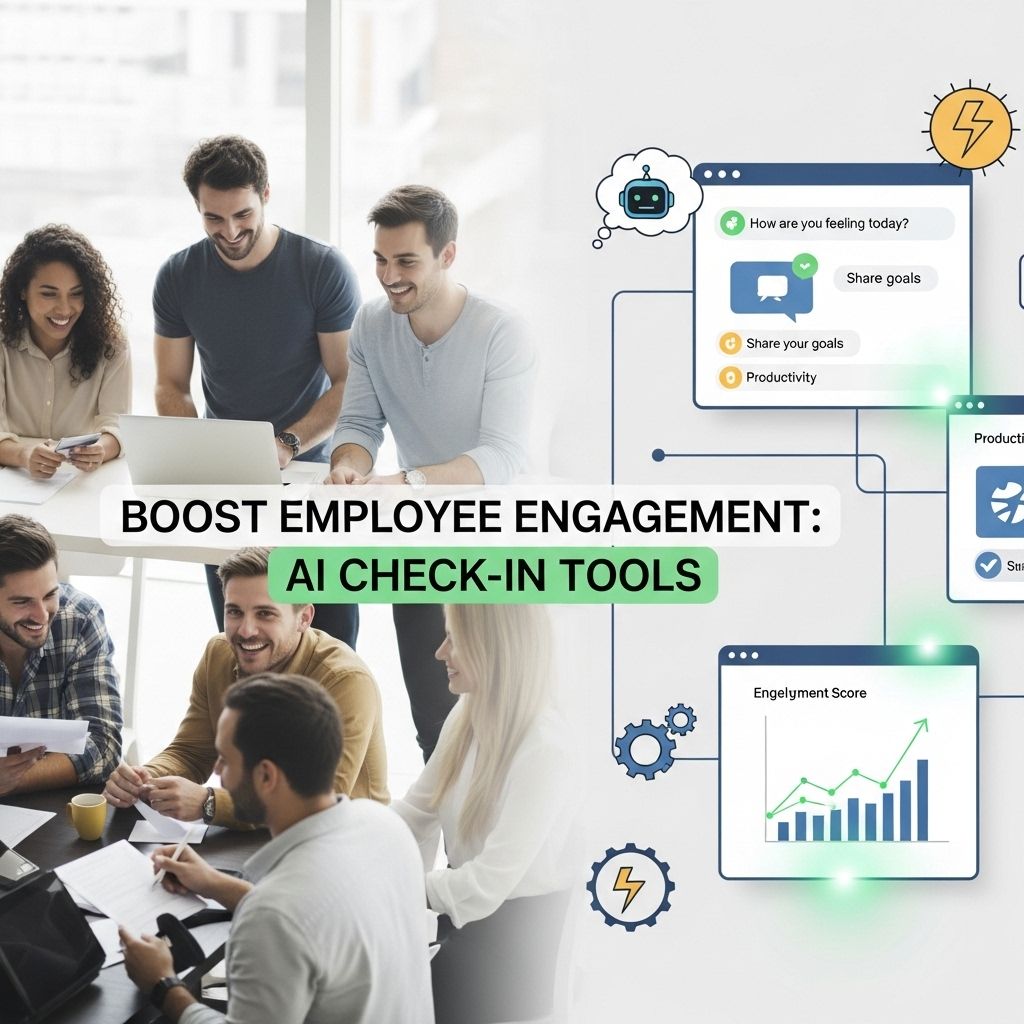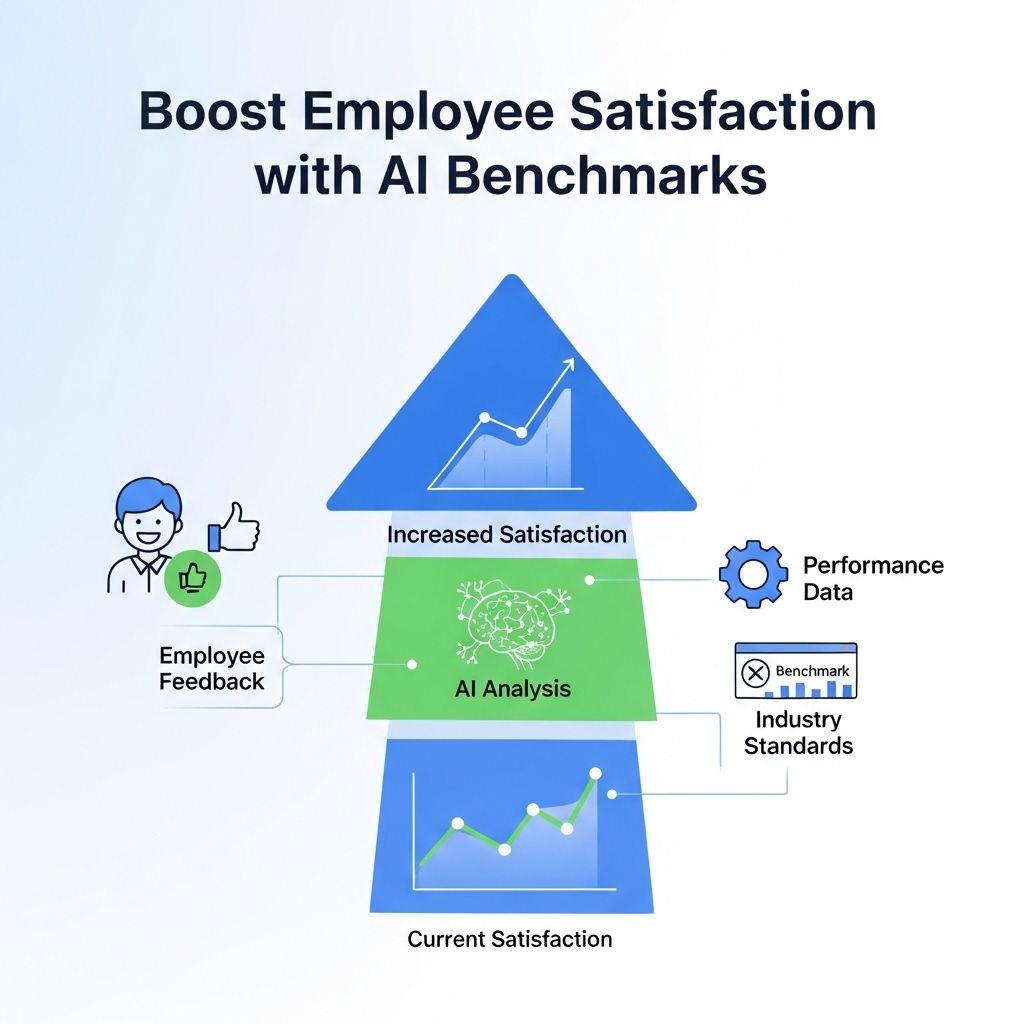Boost Employee Engagement with AI Check-In Tools
Discover how AI check-in tools can enhance employee engagement and improve workplace morale in your organization.

In today’s rapidly evolving workplace, employee engagement is no longer just a nice-to-have; it’s a necessity for organizations aiming to thrive in competitive landscapes. As companies increasingly harness technology to streamline operations, AI-driven check-in tools have emerged as pivotal resources for enhancing employee engagement. These tools not only facilitate seamless communication but also gather crucial insights into employee sentiments, allowing organizations to respond proactively. This article explores the significance of AI check-in tools, their benefits, implementation strategies, and future trends.
Table of Contents
Understanding AI Check-In Tools
AI check-in tools are software applications that utilize artificial intelligence to automate and enhance the process of gathering employee feedback. They can vary in functionality but typically include features such as pulse surveys, mood tracking, and performance analytics. By leveraging machine learning algorithms, these tools can analyze vast amounts of data to provide actionable insights for managers and HR teams.
Key Features of AI Check-In Tools
- Real-Time Feedback: Employees can share their thoughts and feelings about their work environment at any time.
- Sentiment Analysis: AI algorithms evaluate the emotional tone of responses to gauge overall employee sentiment.
- Customizable Surveys: Organizations can tailor questions based on their unique culture and goals.
- Data Visualization: Insights are presented in easily digestible formats, allowing for quick understanding and action.
- Anonymity Options: Employees can choose to provide feedback anonymously, fostering openness.
Benefits of Implementing AI Check-In Tools
The integration of AI check-in tools into the workplace can yield numerous benefits that extend beyond simple feedback collection. Here are some of the most significant advantages:
1. Enhanced Communication
AI check-in tools create a platform for continuous dialogue between employees and management. By facilitating regular check-ins, organizations can foster a culture of transparency and openness.
2. Increased Employee Retention
By regularly assessing employee satisfaction and engagement levels, companies can identify potential issues before they result in turnover.
3. Data-Driven Decision Making
The data collected through AI tools can inform strategic decisions, from resource allocation to employee development programs. This helps organizations become more responsive to employee needs.
4. Improved Productivity
When employees feel heard and valued, their engagement levels rise, often translating to increased productivity. Active participation promotes a sense of ownership over work processes.
Implementation Strategies for AI Check-In Tools
Successfully implementing AI check-in tools requires careful planning and consideration. Here are some strategies organizations can adopt:
Step 1: Assess Organizational Needs
Before choosing a tool, conduct an internal assessment to understand the specific challenges your organization faces regarding employee engagement.
Step 2: Choose the Right Tool
There are various AI check-in tools available, each with unique features. Consider the following factors when making your choice:
- Integration capabilities with existing HR systems
- User interface and ease of use
- Customization features
- Customer support and training services
Step 3: Involve Employees in the Process
Engagement should start from the ground up. Involve employees in selecting the tool and determining what questions to ask, helping foster buy-in and acceptance.
Step 4: Train Management and HR Teams
Ensure that those in leadership roles understand how to utilize the tool effectively. Training sessions can help them interpret the data and take appropriate actions.
Step 5: Review and Iterate
After implementation, regularly review the effectiveness of the AI check-in tool. Gather feedback from employees on the process and make necessary adjustments.
Challenges and Considerations
While AI check-in tools offer significant advantages, organizations should be aware of potential challenges:
| Challenge | Consideration |
|---|---|
| Data Privacy | Ensure compliance with data protection regulations and prioritize employee confidentiality. |
| Technology Acceptance | Some employees may resist adopting new technologies; providing adequate training is crucial. |
| Interpreting Data | AI-generated insights require thoughtful analysis to drive meaningful change. |
The Future of Employee Engagement with AI
As organizations continue to embrace digital transformation, the future of employee engagement is poised to be revolutionized by advancements in AI. Here are some emerging trends to watch:
Predictive Analytics
AI tools will increasingly incorporate predictive analytics to forecast employee engagement levels and identify potential retention risks.
Integrative Platforms
Future check-in tools will likely integrate with other HR systems, creating a holistic view of employee performance and engagement.
Personalization
AI will enable more personalized employee experiences, tailoring check-in questions and feedback mechanisms to individual preferences.
Conclusion
AI check-in tools present organizations with a powerful means to boost employee engagement, foster transparent communication, and make informed decisions based on data-driven insights. By understanding their features, benefits, and implementation strategies, companies can effectively leverage these tools to create a more engaged and productive workforce. As technology continues to evolve, embracing these innovations will be crucial for organizations seeking to enhance employee satisfaction and retention in the long term.
FAQ
What are AI check-in tools for employee engagement?
AI check-in tools are digital platforms that utilize artificial intelligence to facilitate regular communication between employees and management, helping to gauge employee sentiment, gather feedback, and enhance overall engagement.
How can AI check-in tools improve employee morale?
By providing employees with a platform to express their thoughts and feelings, AI check-in tools foster a sense of belonging and recognition, which can significantly boost morale and job satisfaction.
What features should I look for in an AI check-in tool?
Key features to consider include real-time feedback collection, sentiment analysis, customizable surveys, integration with existing HR systems, and user-friendly interfaces.
Can AI check-in tools help identify employee burnout?
Yes, many AI check-in tools are equipped with analytics that can detect signs of burnout by analyzing employee responses over time, allowing organizations to take proactive measures.
Are AI check-in tools suitable for remote teams?
Absolutely! AI check-in tools are particularly beneficial for remote teams, as they facilitate consistent communication and engagement regardless of physical location.
How do AI check-in tools contribute to company culture?
By encouraging open communication and regular feedback, AI check-in tools help create a positive company culture where employees feel valued and engaged.


